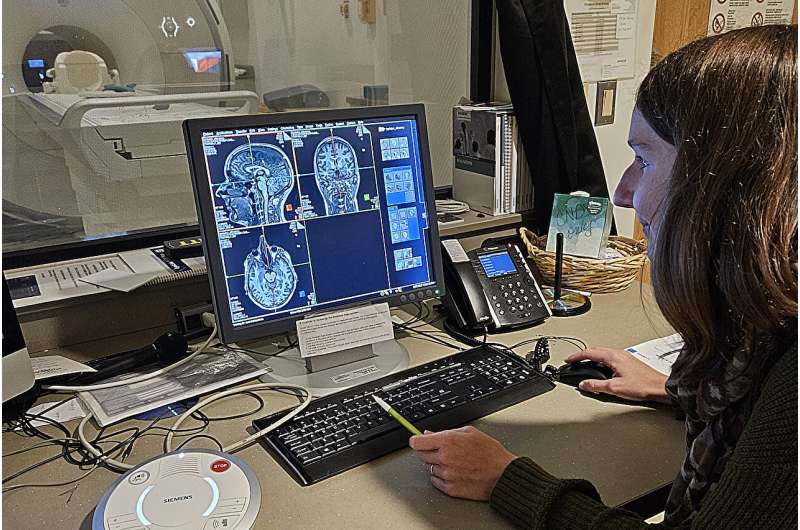This article has been reviewed according to Science X's editorial process and policies. Editors have highlighted the following attributes while ensuring the content's credibility:
fact-checked
peer-reviewed publication
trusted source
proofread
How humans use their sense of smell to find their way

You might say that a sweet tooth turned sixth-year psychology Ph.D. student Clara Raithel onto the human sense of smell.
"As a master's student, I was studying how the brain responds to the 'sweet' taste under various conditions, for example, whether we approach certain food with an indulgent or restrictive mindset," she says. "I realized you can't really study eating behaviors without understanding how people's brains respond to odors. I decided to look for grad school experiences where I could study the human sense of smell."
In the laboratory of Jay Gottfried, Arthur H. Rubenstein University Professor in Psychology and Neuroscience, Raithel found the perfect mentor. Gottfried has studied olfaction—essentially, the science of smell—for nearly two decades. "Since I was a little kid, I've loved the sense of smell," Gottfried says. "Humans have five senses, and they work in tandem, in an integrated way."
But for almost no reason at all, people tend to pick smell as the sense they'd be fine without if they had to lose one, he says. Gottfried felt smell had been highly misjudged, and as a neuroscientist, wanted to prove it by taking a deep dive into questions of odor coding and navigation.
By the time Raithel joined his lab in 2018, Gottfried and colleagues had already experimented with the ways in which humans navigate abstract smells such as banana or rose in two-dimensional spaces, finding that certain parts of the brain linked with memory and emotions help people understand which aromas surround them. Now he wanted to take the work in a more natural direction, creating a three-dimensional virtual reality smellscape (think landscape, but for your nose) that people could attempt to move through.
For the new experiment, 28 participants each entered the smellscape four times. The placement of eight "odor objects" in the environment—smells like orange or banana—always stayed the same. What changed was where participants were placed in the virtual reality arena and which target odor they needed to find.
The results surprised and excited the researchers. "Although the human sense of smell has been poorly regarded across the five different senses, we are now able to establish that human subjects can actually navigate spaces using their nose in the context of a particular type of virtual reality environment," Gottfried says.
"We also demonstrated that this behavior was associated with the emergence of a particular neural signature indicative of what we might call 'cognitive maps,'" Raithel adds. "This neural signature not only appeared in areas traditionally associated with navigation behavior, but also in olfactory-related brain regions." Their findings suggest that these two sets of brain regions share a common spatial code, something that hadn't previously been known.
Raithel says the results, recently published in the journal Current Biology, provide her with further proof that the human sense of smell is underrated. "It's important in its own way, delivering unique information in ways that other senses can't."
Up next, Raithel and Gottfried will attempt to remap the physical odor space by changing the contexts in which participants will have to find their target odor. The concept, already proven in animal models, tries to get at what happens in the brain when a participant must reorient within a space and consider alternative arenas.
All this work pursues a better grasp of olfaction's importance in everyday life. "Imagine you're half a mile from the beach. As you get closer to the seaside, you smell the sea more and more, or you're sitting at Thanksgiving dinner, with all its sounds and smells and flavors," Gottfried says. Now, he adds, imagine if you could no longer smell the distinct aromas associated with those moments—it would be disorienting.
"For someone who has lost their sense of smell, their worldview has constricted," he says. "You don't need your sense of smell to do many things. But when you're suddenly without it, it becomes a wholly disturbing matter."
More information: Clara U. Raithel et al, Recruitment of grid-like responses in human entorhinal and piriform cortices by odor landmark-based navigation, Current Biology (2023). DOI: 10.1016/j.cub.2023.06.087




















